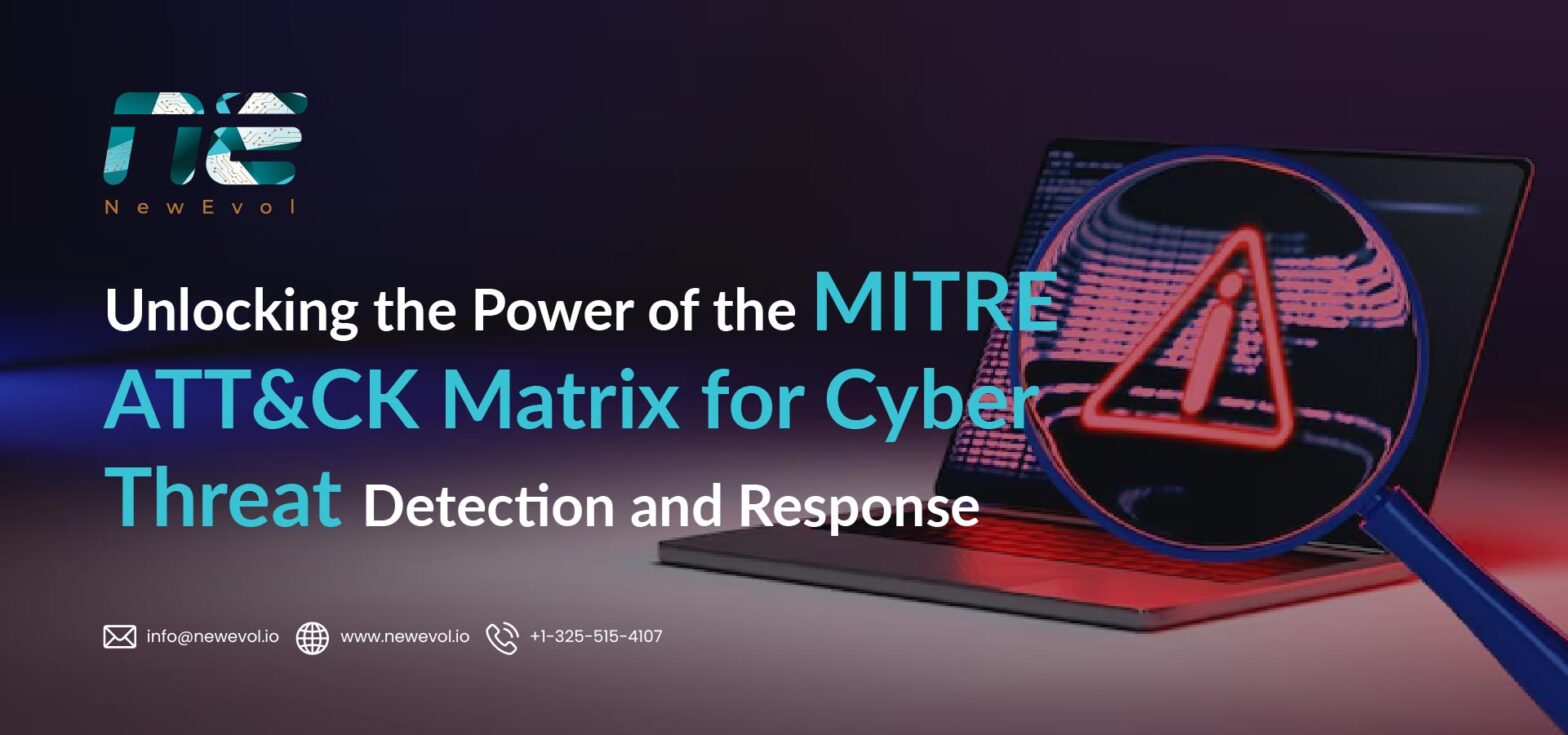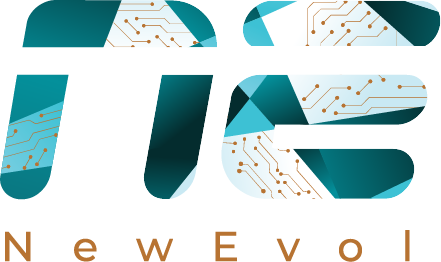Power of the MITRE ATT&CK Matrix for Cyber Threat Detection and Response

When it comes to cybersecurity, most teams are flooded with alerts but still miss actual threats. That’s because knowing something’s wrong isn’t the same as knowing what the attacker is trying to do. This is where the MITRE ATT&CK Matrix changes the game.
In this blog, we’ll break down what the MITRE ATT&CK framework is, why it matters, and how it can supercharge your threat detection and incident response strategy. Whether you’re in a SOC, part of a red or blue team, or just trying to improve your organization’s security posture, understanding the power of ATT&CK is a must.
What Is the MITRE ATT&CK Framework?
The MITRE ATT&CK Framework is a curated knowledge base of real-world cyberattack behaviors. Created by MITRE Corporation, it stands for Adversarial Tactics, Techniques, and Common Knowledge. What makes it powerful is that it doesn’t focus on theoretical threats… it’s built entirely from documented, real-world observations of how attackers operate.
At its core, ATT&CK is structured around the phases of an attack (called tactics) and the specific methods used to achieve those phases (called techniques and sub-techniques). Each row in the matrix represents a tactic like Initial Access, Execution, Persistence, or Exfiltration and each column contains techniques that attackers might use to achieve that goal.
For example, under the tactic Privilege Escalation, one technique could be Exploitation for Privilege Escalation, with sub-techniques like exploiting a kernel vulnerability or bypassing user access controls.
MITRE has also created different matrices for various environments:
- Enterprise (covering Windows, Linux, macOS, cloud, etc.)
- Mobile
- ICS (Industrial Control Systems)
The ATT&CK framework is widely used by threat hunters, red/blue teams, SOC analysts, and tool vendors to align their defenses with how attackers behave making it easier to detect and respond effectively.
Why It’s a Game-Changer for Threat Detection & Response
Most traditional security tools focus on catching known threats, specific malware signatures, blacklisted IPs, or predefined rule sets. But attackers don’t always play by those rules. They constantly change their methods, making it harder for conventional systems to keep up. This is exactly where the MITRE ATT&CK Matrix stands out.
Instead of focusing on what the threat is, ATT&CK helps you understand how the threat works.
By breaking down the step-by-step behavior of attackers from how they get in, to how they move laterally, escalate privileges, and steal data, it gives security teams a much clearer picture of what to look for. That means fewer blind spots and faster detection of suspicious activity, even if the attack is brand new.
The framework also serves as a common language across teams. SOC analysts, red teamers, threat hunters, and incident responders can all map their findings to the same set of tactics and techniques, making collaboration smoother and more effective.
And when you start mapping your detections to ATT&CK techniques, you can immediately spot gaps like realizing you have no visibility into credential dumping or command-line abuse. This insight allows you to prioritize your defenses and focus your resources where they matter most.
In short, ATT&CK turns reactive security into proactive detection and smarter response which is a game-changer in today’s threat landscape.
Use Cases & Applications
The MITRE ATT&CK Framework isn’t just a reference guide… it’s a practical tool that can be used across many areas of cybersecurity. From daily SOC operations to advanced red-teaming and executive-level risk analysis, here’s how organizations are putting ATT&CK to work:
1. Threat Detection and Hunting
Security teams use ATT&CK to identify suspicious behavior across their environment. Instead of relying only on indicators of compromise (IOCs), they look for patterns of attacker behavior like unusual PowerShell usage or attempts to disable security tools. This behavior-based approach leads to earlier and more reliable detection.
2. Incident Response
When a breach happens, time matters. ATT&CK helps responders quickly understand what the attacker has done and what their next steps might be. By mapping observed actions to known tactics and techniques, teams can reconstruct the attack timeline, contain it faster, and avoid repeating the same mistake.
3. Red Teaming and Adversary Emulation
Red teams (and purple teams) use ATT&CK to simulate real-world attack scenarios. Instead of inventing test cases from scratch, they build campaigns using actual techniques from the matrix — like credential dumping or lateral movement. This leads to more realistic testing and stronger defenses.
4. Gap Analysis and Security Control Validation
Organizations can map their existing security tools and coverage areas against the ATT&CK framework to see where they’re blind. For example, you may have solid detection for ransomware encryption but no coverage for persistence techniques like registry run keys. This makes ATT&CK an ideal tool for prioritizing investments and tuning SIEM/XDR systems.
5. Threat Intelligence Mapping
When new threat intel reports are released, analysts often map adversary activity to ATT&CK techniques. This creates a more structured understanding of how threat actors operate, making it easier to defend against them. It also enables better sharing of threat data across teams and organizations.
6. Compliance and Reporting
Although ATT&CK isn’t a compliance standard, it complements frameworks like NIST, ISO, and CIS Controls. It helps demonstrate that you’re actively monitoring and defending specific techniques which can be a huge plus during audits or board-level reporting.
Essential Benefits & Advantages
The MITRE ATT&CK Framework brings much more than just structure.. it delivers real, measurable improvements across the entire cybersecurity lifecycle. Here are the key advantages organizations gain when they actively adopt and apply ATT&CK:
1. Smarter Threat Detection
By focusing on attacker behavior instead of just known indicators, ATT&CK helps you detect even the stealthiest threats. It allows teams to spot malicious actions… like privilege escalation or lateral movement, even when malware or signatures are unknown. This improves early detection and reduces dwell time significantly.
2. Better Visibility into Security Gaps
ATT&CK helps you uncover exactly where your detection and response capabilities fall short. By mapping your current tools, logs, and alerts to specific ATT&CK techniques, you can identify blind spots and fix them with targeted improvements… whether that means new detections, telemetry, or playbooks.
3. Aligned Communication Across Teams
One of ATT&CK’s most underrated strengths is that it provides a shared language. Whether it’s red teamers, blue teamers, SOC analysts, or CISOs, everyone can speak in terms of tactics and techniques. This alignment improves collaboration, speeds up investigations, and supports better decision-making.
4. More Effective Use of Security Tools
SIEMs, EDR/XDR platforms, SOAR tools, and even threat intel feeds often integrate directly with the ATT&CK framework. This makes it easier to correlate data, enrich alerts, and automate responses based on the technique being observed. Instead of reacting blindly, your tools can work with context.
5. Stronger Incident Response and Investigation
ATT&CK gives responders a structured way to interpret what’s happening during an attack. You’re not guessing… you’re mapping each step of the attacker’s behavior, which speeds up containment, eradication, and recovery. It also improves post-incident reviews and root cause analysis.
6. Continuous Improvement
Because MITRE ATT&CK is updated regularly with new techniques and threat group mappings, it becomes a living reference for ongoing threat coverage. It encourages teams to evolve their detection logic and stay ahead of emerging adversary tactics.
Best Practices for Implementing ATT&CK
The MITRE ATT&CK framework is powerful, but to get the most out of it, it needs to be implemented with strategy and focus. Here are some proven best practices to help your team adopt ATT&CK effectively:
1. Start Small and Focused
Don’t try to cover the entire matrix at once. Begin with high-risk areas such as privilege escalation, credential access, or execution techniques that are relevant to your environment. Choose a few techniques, map your current visibility, and build detections around them.
2. Map What You Already Have
Before building anything new, evaluate how your existing logs, alerts, and detections align with ATT&CK techniques. You might be surprised to find partial coverage already in place. Use this mapping to identify gaps and prioritize what to improve.
3. Integrate with Existing Tools
Many modern SIEM, EDR, XDR, and SOAR platforms support ATT&CK integration. Leverage this by tagging alerts and correlating events using ATT&CK techniques. It makes analysis faster, automation smarter, and reporting more meaningful.
4. Make It Part of Your Threat Hunting
Use ATT&CK to guide proactive threat hunts. Create hypotheses like: “Are there signs of PowerShell abuse (T1059.001) in the last 30 days?” This structured approach gives your team a repeatable method to uncover hidden threats.
5. Train Your Team
Don’t assume everyone understands ATT&CK out of the box. Run internal workshops or training sessions to teach your SOC analysts, red/blue teamers, and engineers how to use and interpret the matrix. Make it a part of your onboarding for new hires in security roles.
6. Document and Share Learnings
As you implement and refine your use of ATT&CK, maintain internal documentation. Create use case libraries that map detection rules or playbooks to techniques. Share these across teams to promote consistency and learning.
7. Stay Updated
The threat landscape is always changing and so is ATT&CK. New techniques and updates are released regularly. Make it a habit to review changes and update your mappings and detections accordingly.
Challenges & Limitations to Acknowledge
While the MITRE ATT&CK Framework is incredibly useful, it’s important to understand that it’s not a silver bullet. Like any tool, it has its challenges and limitations and recognizing them early can help you implement it more effectively.
1. Steep Learning Curve for Beginners
For teams new to threat detection or behavioral analytics, the matrix can feel overwhelming. With over 200 techniques and multiple sub-techniques spread across several tactics, it takes time to learn how to use it meaningfully especially without prior exposure to adversary TTPs.
2. Risk of Misuse as a Checklist
One common pitfall is treating ATT&CK like a checklist to “complete.” Just because you’ve mapped a technique or created a rule doesn’t mean you’re covered. Without proper context, telemetry, and continuous tuning, mapped techniques can give a false sense of security.
3. Requires High-Quality Telemetry
ATT&CK-based detection depends heavily on the quality and depth of your telemetry. If your endpoints, network, or cloud environments aren’t generating detailed enough logs, you’ll struggle to detect many techniques regardless of how well they’re mapped.
4. Mapping Can Be Subjective
When analyzing an event or attack, mapping it to the “right” technique isn’t always straightforward. Analysts may interpret behavior differently, leading to inconsistent or inaccurate technique attribution which can affect reporting and threat intelligence.
5. Not Designed for Prevention
ATT&CK is focused on detection and response, not prevention. It doesn’t replace antivirus, firewalls, or vulnerability management. If your team expects it to block attacks, they may be misusing the framework’s intent.
6. Maintenance Overhead
Since the matrix is continuously updated, staying current can be a challenge. Organizations need to monitor updates, revise their mappings, and adjust detection logic regularly which takes time and dedicated resources.
Future Directions & ISO Innovations
As cyber threats continue to evolve, so does the MITRE ATT&CK Framework and its role in shaping modern cybersecurity strategies. Looking ahead, several innovations and integrations are emerging that will further strengthen how ATT&CK is used for detection, response, and threat intelligence.
1. Automation and AI-Driven Mapping
Security vendors and research teams are exploring how machine learning and AI can automatically map security events and SIEM rules to ATT&CK techniques. Tools like Rule-ATT&CK Mapper are already using natural language processing (NLP) to align detection content with the correct ATT&CK entries — saving time and reducing human error.
2. Behavioral Pattern Correlation
New research is focusing on identifying co-occurrence patterns of ATT&CK techniques — understanding how certain behaviors often appear together in real-world attacks. This allows for smarter correlation, threat scoring, and prioritization within SOC platforms, enhancing detection fidelity.
3. Integration with Compliance and Risk Frameworks
Organizations are starting to align ATT&CK with governance and compliance models like ISO/IEC 27001, NIST CSF, and MITRE’s own Engage Framework. This convergence allows for more cohesive reporting, control mapping, and risk analysis — bridging the gap between security operations and regulatory requirements.
4. More Industry-Specific Applications
We’re seeing a push toward tailoring ATT&CK for specific sectors — like finance, healthcare, and manufacturing — with overlays that map out the most relevant tactics and techniques for each vertical. This allows organizations to deploy ATT&CK in more focused, relevant ways.
5. Enhanced Visualization and Collaboration Tools
New platforms and dashboards are making it easier to visualize ATT&CK coverage, track detection gaps, and collaborate across teams. Features like heatmaps, real-time technique detection, and MITRE-compatible dashboards are being integrated into SIEM, SOAR, and EDR/XDR tools.
6. Expansion of the ATT&CK Knowledge Base
MITRE continues to expand the matrix with new techniques, sub-techniques, and mappings to threat groups and software. These updates reflect real-world attack evolution, including cloud-specific tactics, supply chain attacks, and abuse of legitimate tools.
Take the Next Step with NewEvol
The MITRE ATT&CK Framework is a powerful resource but leveraging it effectively requires the right expertise, tools, and integration strategy. At NewEvol, we help security teams turn ATT&CK insights into real-world detection and response capabilities.
Whether you’re just starting with ATT&CK or looking to scale your threat detection maturity, our platform offers:
- Deep integration with MITRE ATT&CK across SIEM and SOAR
- Automated mapping of attacker techniques and detection rules
- Advanced threat analytics and behavioral correlation
- Custom dashboards and reporting aligned to ATT&CK coverage
Final Note
The MITRE ATT&CK Framework offers a structured way to detect and respond to cyber threats by focusing on attacker behavior. It improves visibility, reduces false positives, and enhances team collaboration. With the right implementation and continuous tuning, it becomes a powerful asset — especially when integrated with SIEM, SOAR, and threat intelligence tools.
At NewEvol, we help organizations maximize the value of ATT&CK through automation, smart analytics, and tailored dashboards — making threat detection faster and more effective.
- Recap: ATT&CK offers structure, detection power, and better response alignment
- Encourage starting small, training teams, integrating tools, and iterating
- Suggest taking a pilot project: map a few highrisk techniques in your environment
FAQs
1. What are the benefits of the MITRE ATT&CK Matrix?
It improves threat detection, identifies security gaps, enhances incident response, and provides a common language for security teams.
2. What is the MITRE ATT&CK Framework for incident response?
It helps incident responders map attacker behavior, understand the attack path, and respond faster by aligning tactics and techniques to real-world threats.
3. What is the MITRE Detect Matrix?
It’s often a mislabeling of the MITRE ATT&CK Matrix, which supports detection by categorizing attacker behaviors across the intrusion lifecycle.
4. What are the key MITRE ATT&CK techniques used by cyber attackers?
Common techniques include phishing (T1566), credential dumping (T1003), lateral movement (T1021), and command and scripting abuse (T1059).

